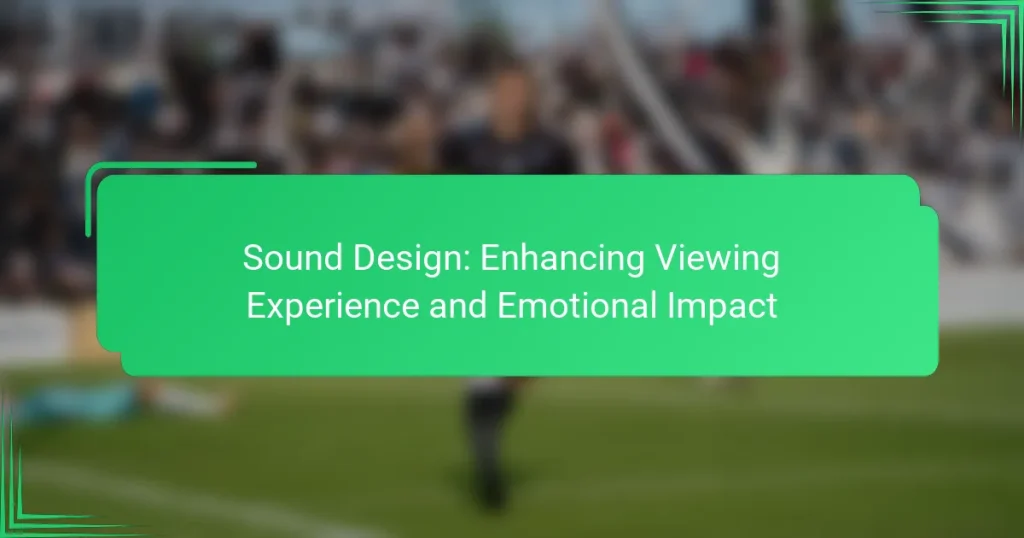Sound design plays a crucial role in enhancing the viewing experience by immersing audiences in a rich auditory environment that complements the visual narrative. By skillfully manipulating sound elements, designers can evoke emotions and deepen the audience’s connection to the story, making each moment more impactful and memorable.
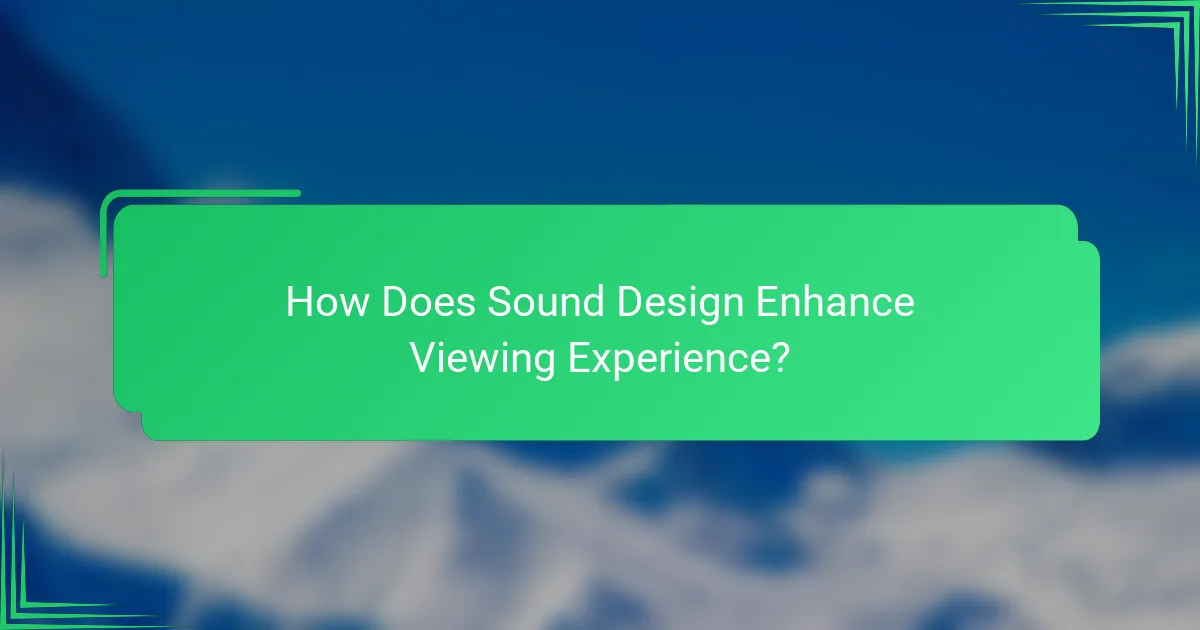
How Does Sound Design Enhance Viewing Experience?
Sound design significantly enhances the viewing experience by creating an immersive environment that engages the audience’s senses. It shapes how viewers perceive the narrative and emotional depth of a film or video, making the experience more impactful and memorable.
Immersive Audio Techniques
Immersive audio techniques, such as surround sound and binaural audio, create a three-dimensional soundscape that envelops the viewer. These methods allow sounds to come from various directions, enhancing realism and engagement. For example, using Dolby Atmos can elevate a standard viewing experience by adding height channels, making sounds appear to move above and around the audience.
When implementing immersive audio, consider the acoustics of the viewing space. A well-designed sound system can significantly improve clarity and depth, while poor acoustics may lead to muddled audio. Testing sound levels and speaker placements is crucial to achieving the desired effect.
Emotional Resonance Through Sound
Sound design plays a vital role in evoking emotions, using music and sound effects to enhance the narrative. For instance, a suspenseful score can heighten tension during critical moments, while soft melodies can evoke nostalgia or sadness. The choice of instruments and tempo can influence how viewers feel about characters and events.
To effectively use sound for emotional resonance, align audio cues with visual elements. This synchronization helps reinforce the intended emotional response. Avoid overusing dramatic sound effects, as they can detract from the story and feel manipulative.
Spatial Audio Implementation
Spatial audio implementation involves creating a sound experience that mimics real-world acoustics, allowing viewers to perceive sound directionality and distance. Techniques such as object-based audio allow sound designers to place audio elements in a 3D space, enhancing immersion. This is particularly effective in virtual reality (VR) and augmented reality (AR) applications.
When implementing spatial audio, consider the playback environment. Ensure that the audio system supports spatial sound formats and that the audience is positioned optimally for the best experience. Regularly test and adjust audio settings to maintain clarity and balance across different devices and platforms.
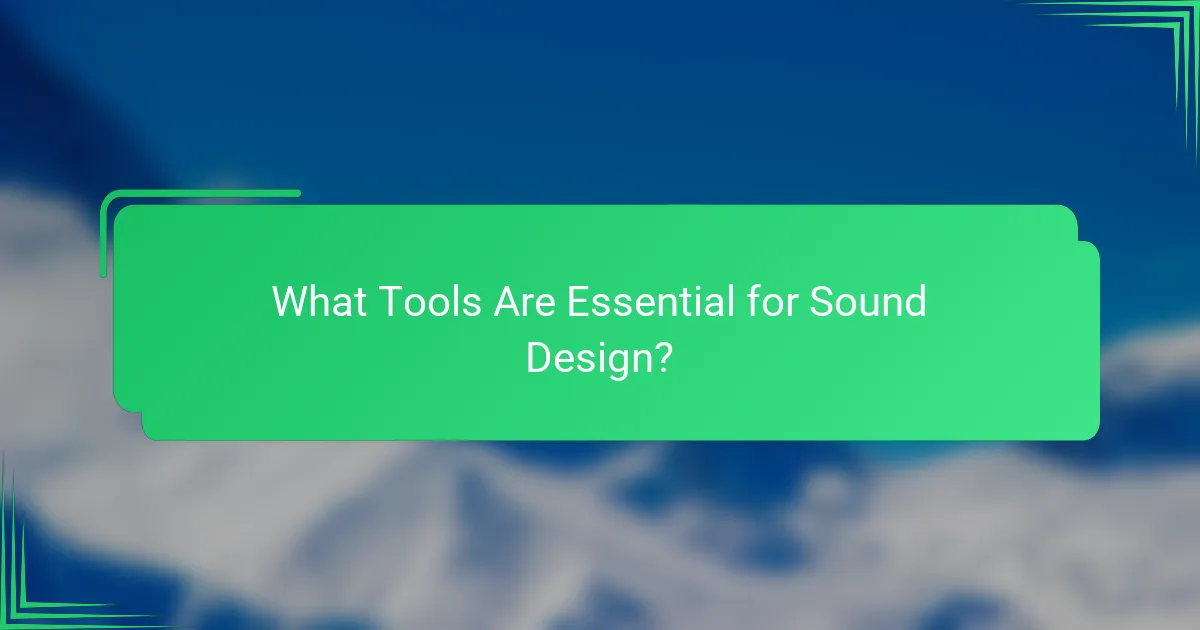
What Tools Are Essential for Sound Design?
Essential tools for sound design include software and hardware that facilitate music production, audio editing, and sound restoration. The right tools can significantly enhance the quality of sound, impacting the overall viewing experience and emotional engagement of the audience.
Ableton Live for Music Production
Ableton Live is a powerful digital audio workstation (DAW) widely used for music production and sound design. Its intuitive interface allows users to create, edit, and arrange music effortlessly, making it ideal for both beginners and professionals.
Key features include session view for improvisation and arrangement view for linear composition. Users can take advantage of built-in instruments, effects, and a vast library of sounds to enhance their projects. Consider using Ableton Live for its flexibility in live performances and studio settings.
Pro Tools for Audio Editing
Pro Tools is the industry standard for audio editing, favored by professionals in film and music. It offers advanced editing capabilities, including multi-track recording and precise audio manipulation, which are essential for achieving high-quality sound design.
When using Pro Tools, focus on its powerful features like Elastic Audio for tempo adjustments and advanced mixing options. It’s important to familiarize yourself with its interface and shortcuts to maximize efficiency, especially when working on complex projects.
Adobe Audition for Sound Restoration
Adobe Audition is a robust tool for sound restoration and audio post-production. It provides a suite of features designed to clean up audio, remove noise, and enhance sound quality, making it invaluable for filmmakers and sound designers.
Utilize tools like the Spectral Frequency Display and Noise Reduction effects to restore audio tracks effectively. When working with Adobe Audition, always save backups of original recordings before applying extensive edits to avoid irreversible changes.

Which Techniques Improve Emotional Impact?
Techniques that enhance emotional impact in sound design include dynamic range manipulation, sound layering strategies, and the use of silence. These methods help create a more immersive viewing experience by engaging the audience’s emotions effectively.
Dynamic Range Manipulation
Dynamic range manipulation involves adjusting the volume levels of sounds to create contrast between the softest and loudest parts of a soundtrack. This technique can evoke strong emotional responses; for instance, quieter moments can heighten tension before a sudden loud sound, amplifying the impact.
When applying dynamic range, consider the context of your project. For films, a range of around 20-30 dB is often effective, while music might benefit from a wider range. Be cautious of over-compression, which can flatten emotional nuances and reduce overall impact.
Sound Layering Strategies
Sound layering strategies involve combining multiple audio elements to create a richer soundscape. By layering different sounds, such as dialogue, music, and ambient noise, you can enhance the emotional depth of a scene. For example, adding subtle background sounds can make a setting feel more alive and immersive.
To effectively layer sounds, prioritize clarity and balance. Use EQ to carve out space for each element, ensuring that no single sound overpowers the others. A common approach is to keep dialogue clear while using music and effects to support the emotional tone without distraction.
Use of Silence for Tension
The use of silence is a powerful tool in sound design that can create tension and anticipation. Pauses in audio can draw attention to key moments, making subsequent sounds more impactful. For example, a sudden silence before a dramatic reveal can heighten suspense significantly.
Incorporate silence strategically; even brief pauses of a few seconds can be effective. However, avoid overusing silence, as it can lead to a loss of engagement. Instead, use it to punctuate critical moments, allowing the audience to absorb the emotional weight of the scene.
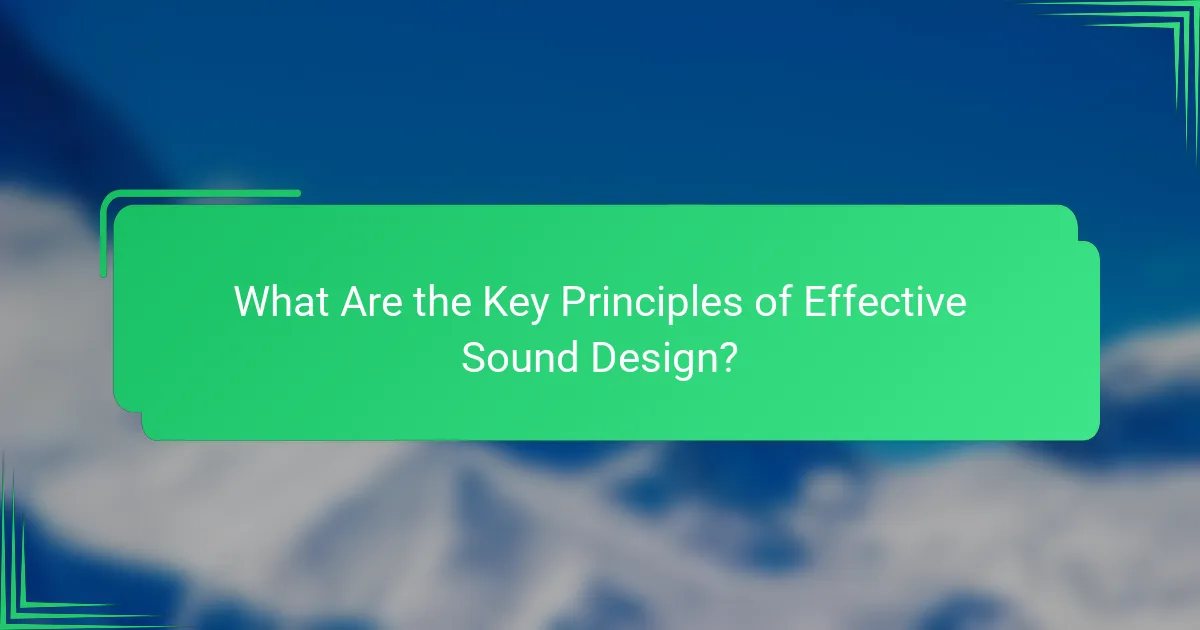
What Are the Key Principles of Effective Sound Design?
Effective sound design enhances the viewing experience by creating an immersive audio environment that complements visuals and evokes emotions. Key principles include maintaining audio quality, making contextual sound choices, and employing techniques to engage the audience.
Consistency in Audio Quality
Consistency in audio quality is crucial for maintaining the viewer’s focus and emotional connection. This involves ensuring that sound levels are balanced across different scenes and elements, avoiding abrupt changes that can distract the audience.
To achieve this, sound designers should use high-quality audio equipment and adhere to industry standards for mixing and mastering. Regularly monitoring audio levels during production can help maintain a uniform sound experience.
Contextual Sound Choices
Contextual sound choices refer to selecting audio elements that enhance the narrative and setting of a scene. This includes using sounds that are relevant to the environment, characters, and actions taking place, which helps ground the viewer in the story.
For instance, using ambient sounds like city traffic in an urban scene or nature sounds in a forest setting can significantly enhance realism. Sound designers should consider the emotional tone of the scene when making these choices, ensuring that the audio supports the intended mood.
Audience Engagement Techniques
Engaging the audience through sound involves using techniques that capture attention and evoke emotional responses. This can include dynamic soundscapes, strategic use of silence, and sound effects that heighten tension or excitement.
For example, incorporating sudden loud sounds during a suspenseful moment can create a jolt, while softer sounds can draw the audience in during intimate scenes. It’s essential to balance these techniques to avoid overwhelming the viewer, ensuring that sound enhances rather than detracts from the overall experience.
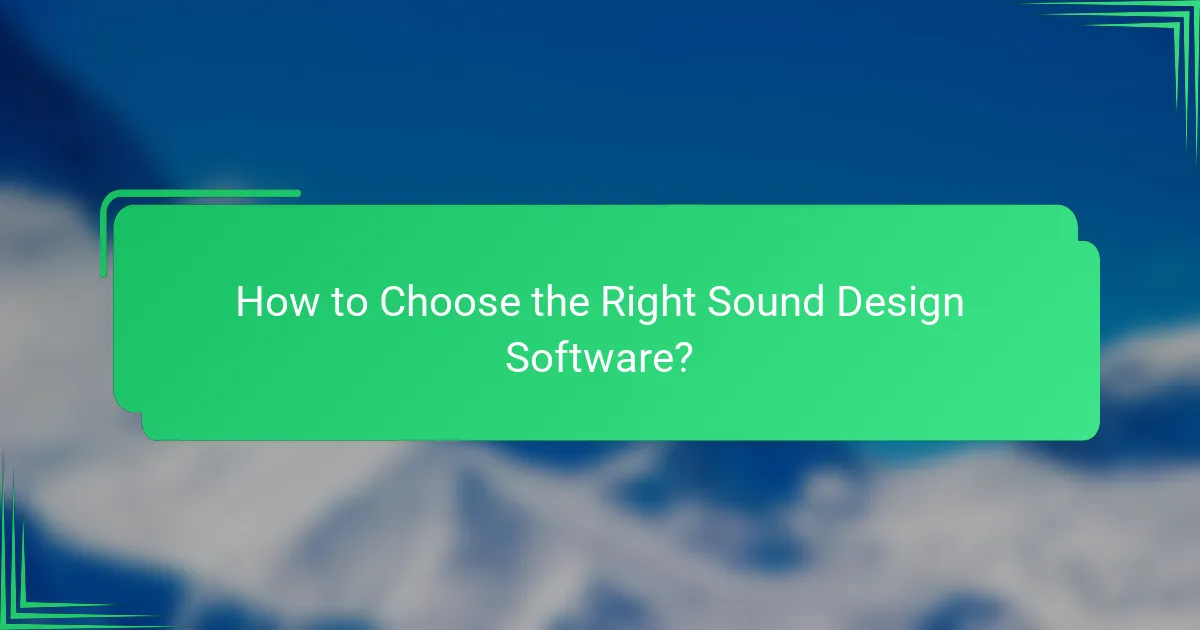
How to Choose the Right Sound Design Software?
Selecting the right sound design software involves considering your specific needs, budget, and user experience. Look for features that align with your projects, whether you are a beginner or a professional, and ensure the software integrates well with your existing tools.
Budget Considerations
Your budget significantly influences your choice of sound design software. Prices can range from free options to several hundred dollars for professional-grade tools. Consider whether a one-time purchase or a subscription model fits your financial situation better.
Free software like Audacity can be a great starting point for beginners, while more advanced users may prefer options like Ableton Live or Pro Tools, which offer extensive features at a higher cost. Always check for student discounts or trial versions to test before committing.
User Interface Preferences
The user interface (UI) of sound design software can greatly affect your workflow and creativity. A clean, intuitive UI can help you navigate tools more efficiently, while a cluttered interface may hinder your productivity. Look for software that offers customizable layouts to suit your personal preferences.
Consider trying out demos to assess how comfortable you feel with the interface. Some software, like Logic Pro X, is known for its user-friendly design, while others may have steeper learning curves. Prioritize software that allows you to focus on sound creation rather than getting lost in complex menus.
